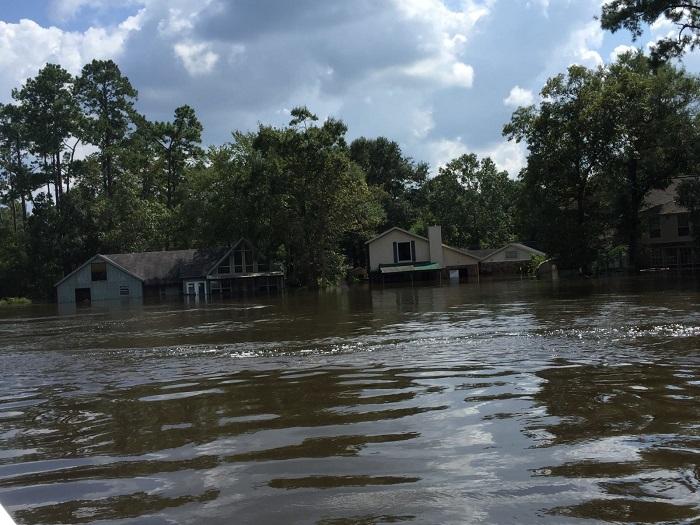
The Edgewater Day Use Area off of Broad Oak Drive was flooded after Hurricane Harvey on September 3/NPS
As the Caribbean braces to take the brunt of a second hurricane in three weeks, parks in Texas are continuing to recover from destruction caused last month by Hurricane Harvey. The good news is that Big Thicket National Preserve, which experienced unprecedented flooding, is beginning to return to normal operations.
“Today, we are pleased to report that much of the national preserve is open and available for exploration,” the park said in a release Tuesday. “The preserve’s visitor center has resumed its normal schedule, and ranger-led programs are again being offered. Currently, 11 miles of the preserve's 40 miles of trails are open. In addition, the preserve is again issuing backcountry camping permits and hunting permits to visitors.”
However, most of the Turkey Creek Trail and seven miles of the Big Sandy Trail remain closed. Many of the day-use areas along the Neches River were significantly impacted by flooding and still need to be cleaned. Some of the unpaved roadways in the preserve were washed out and need to be repaired.
In response to Hurricane Harvey, National Park Service staff from around the nation joined Big Thicket personnel to assist in the immediate response and recovery efforts. Floodwaters threatened the preserve’s infrastructure along the Neches River, Turkey Creek, Village Creek, Cypress Creek, Pine Island Bayou, and other lesser-known drainages.
Extreme water levels throughout Southeast Texas have displaced many wild animals. Over the next few weeks, animals like snakes, alligators, armadillos, and skunks could be seeking shelter in unusual places. These animals may be easily startled, agitated, or even aggressive.
Flooding created new hazards in the backcountry and along waterways. Banks along creeks and rivers may be soft and unstable. While exploring the wilderness, be aware of the surroundings, watch out for unstable surfaces, and always tell someone where you are going and when you’ll be back.

 Support Essential Coverage of Essential Places
Support Essential Coverage of Essential Places






